Archaeologists located a city dating back more than 500 years
Source - http://www.naukawpolsce.pap.pl/en/news/news,391851,archaeologists-located-a-city-dating-back-more-than-500-years.html
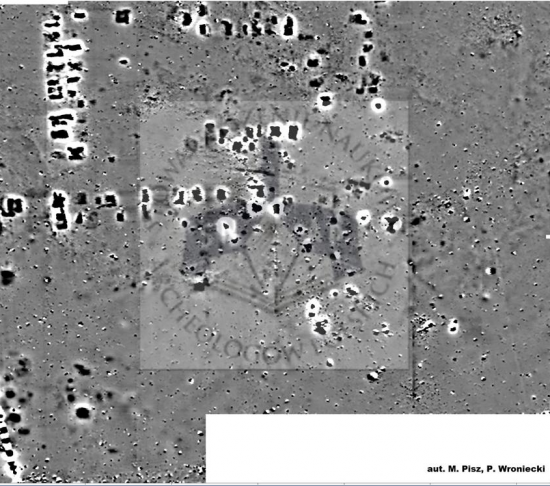
Geophysical map of medieval Nieszawa - regular buildings visible
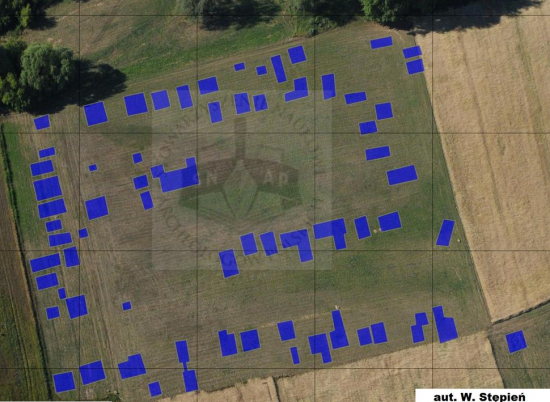
Aerial photo of Nieszawa and interpretation; blue dots represent possible buildings, photo by W. Stępień.
A group of archaeologists from Warsaw located the place of second location of the city Nieszawa near Dybowski Castle in Toruń. The researchers used non-invasive research methods: air prospection and geophysical surveys.
"With surveys, we were able to preliminarily locate the likely range, size and topography of the city, which has not existed for over 550 years" - says project co-ordinator Michał Pisz. As a result of carried out geophysical surveys, the researchers have obtained a clear outline of the buildings around the square. Furthermore, the anomalies recorded by magnetic measurements correspond to the vegetation highlights captured in aerial photographs taken by Wiesław Stępień. "Based on the preliminary interpretation of the magnetic measurement results, it can be concluded that the source of anomalies we have recorded are objects made of bricks" - said Piotr Wroniecki, archaeologist involved in the project.
After surveying the central part of the city, the researchers will move to the west and north. "We want not only to survey the topography of the city itself, but also its immediate surroundings, and achieve possibly faithful reconstruction of the historical landscape from the time of its existence. We will try to determine the range of the objects on the east and west of the city. We will also attempt to reconstruct the old left bank of the Vistula, on which the port part of the city was located"- said Pisz.
After completion of magnetic studies, selected areas will be complemented with resistivity measurements. "Ultimately, the full interpretation will be based on all available data, not just the results of geophysical and air prospecting, but also the results of earlier excavations, available archival and historical maps, historical materials, as well as satellite images" - added Wroniecki.
On September 16, festival will be held in contemporary Nieszawa, where visitors can meet the authors of the project, see the obtained results and ask questions. "We want to promote this unique site. We are dealing here with a kind of a +time capsule+, a medieval town, which had functioned for only 35 years" - concluded Write. Studies are being carried out by the Lódź branch of the Scientific Association of Polish Archaeologists under the Ministry of Culture and National Heritage programme Priority 5 "Protection of Archaeological Monuments" coordinated by the National Heritage Board of Poland. The project falls under the honorary patronage of the Mayor of Nieszawa, Marian Tołodziecki.
3D reconstruction of medieval Nieszawa
Source - http://www.naukawpolsce.pap.pl/en/news/news,394663,3d-reconstruction-of-medieval-nieszawa.html
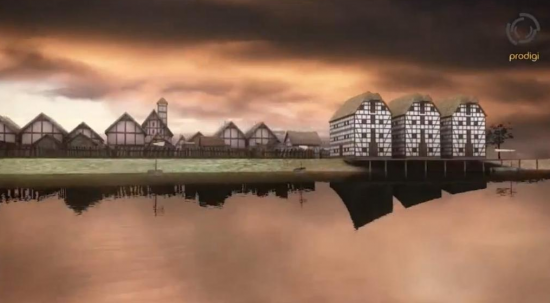
Animation by Jakub Zakrzewski and Stanisław Rzeźnik.
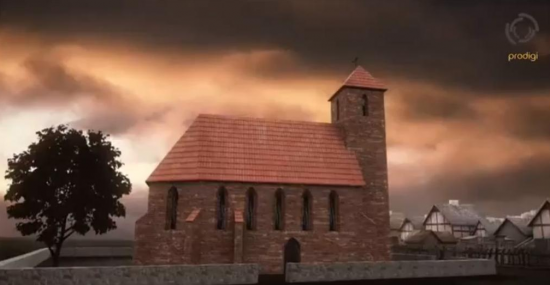
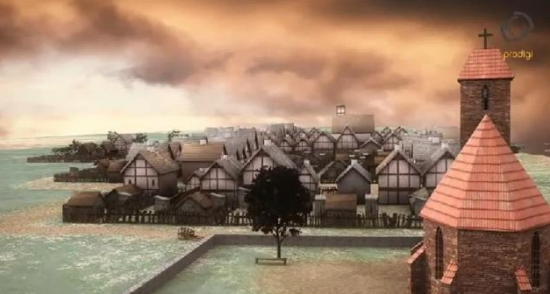
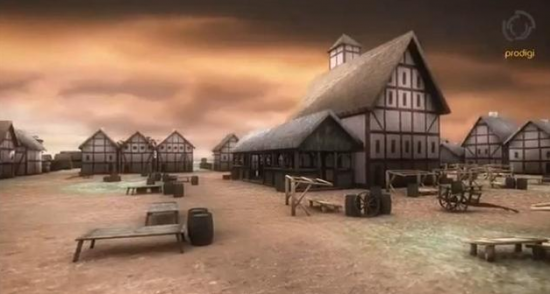
In 2012, precise location of medieval town Nieszawa was determined. And that's without sinking a shovel into the ground, with the use of non-invasive methods. Now, a professional, 3D reconstruction of the settlement has been prepared for everyone to see on YouTube.
Animation authors are Jakub Zakrzewski and Stanisław Rzeźnik, who created a preliminary reconstruction of the medieval Nieszawa in collaboration with Piotrand Wroniecki and Michał Pisz, and with archaeological and historical consultation with Lidia Grzeszkiewicz-Kotlewska and Leszek Kotlewski, dr. Jerzy Sikora and Dariusz Osiński.
Today’s Nieszawa is a small town situated on the west bank of the Vistula River, 30 km upstream from Toruń. Its history dates back to the thirteenth century, when it was given to the Teutonic Order by Konrad I Mazowiecki in 1228 (today small town Mała Nieszawka). Over the next 200 years, the town location changed twice. After the defeat at Grunwald, the Teutonic Knights were forced to tear down the Commandery and the castle. However, already in 1424 Władyslaw Jagiello founded Mała Nieszawka near Toruń. After 1460, the town was moved several miles up the Vistula, where it remains today.
Relics of abandoned, fifteenth-century town were located with air prospecting done by Wiesław Stępień. Magnetic and electric resistance tests recorded the exact outlines of the houses. Earlier, the location of the city was preliminarily identified through survey by Lidia Grzeszkiewicz-Kotlewska in cooperation with aviation archaeologist - Wiesław Stępień
"There is no doubt that the geophysical anomaly distribution maps, although the possibility of their presentations are now very extensive, remain very difficult to read even for archaeologists. With this assumption, on the basis of the data obtained we have made digital reconstruction in a 3D environment" - Piotr Wroniecki told PAP.
The archaeologist reserved, however, that the reconstruction is a visualization of the supposed appearance of medieval Nieszawa, and it remains an open project. As new archaeological and historical data are obtained, it will be supplemented with new elements.
"The creation of pre-visualization of the objects and attracting interest of archaeologists and historians is aimed to encourage a discussion on further archaeological interpretation of geophysical and air survey data, as well as of the towns themselves" - added Wroniecki. In his opinion, such reconstruction is also a gesture towards the wider community of those passionate about the distant past, interested in archaeological findings.
"From our own experience, we see that it is much easier to get journalists interested in the topic, if you have a 3D reconstruction, which in comparison with the magnetic maps is more appealing to the imagination. By showing only geophysical maps, we allow to build the image of the era, which often does not reflect its reality" - said Wroniecki.
Research is carried out with funds from the Ministry of Culture and National Heritage and SNAP in Łódź. The project falls under the honorary patronage of the Mayor of Nieszawa - Marian Tołodzieckie.